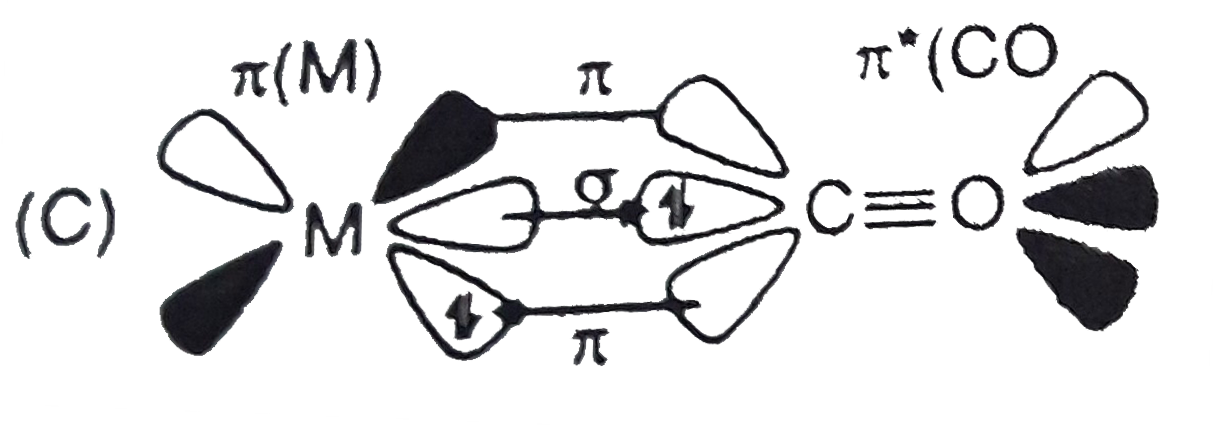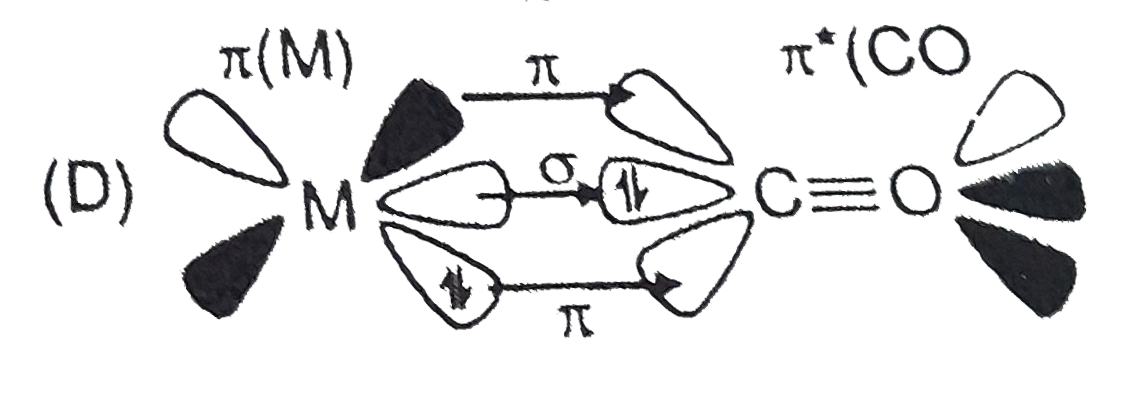In which of the following back - bonding is possible
BF3
(SiH3)3N
NH3
both A and B
The correct Answer is:D
To determine in which of the given compounds back-bonding is possible, we will analyze each compound step-by-step.
Step 1: Analyze BF3 (Boron Trifluoride)
- Structure: Boron (B) is bonded to three fluorine (F) atoms.
- Electron Configuration: Boron has 3 valence electrons, while each fluorine has 7 valence electrons.
- Lone Pairs: Each fluorine has 3 lone pairs of electrons.
- Back-Bonding: Boron is electron-deficient (it has only 6 electrons in its valence shell). The fluorine atoms can donate a pair of electrons from their lone pairs into the empty p-orbital of boron, resulting in back-bonding.
Conclusion: Back-bonding occurs in BF3.
Step 2: Analyze SiH3-N (Silicon Hydride and Nitrogen)
- Structure: Silicon (Si) is bonded to three hydrogen (H) atoms and one nitrogen (N) atom.
- Electron Configuration: Silicon has 4 valence electrons, and nitrogen has 5 valence electrons.
- Lone Pairs: Nitrogen has one lone pair of electrons.
- Back-Bonding: The lone pair on nitrogen can be shared with silicon, allowing for back-bonding. This interaction gives a double bond character between silicon and nitrogen.
Conclusion: Back-bonding occurs in SiH3-N.
Step 3: Analyze NH3 (Ammonia)
- Structure: Nitrogen (N) is bonded to three hydrogen (H) atoms.
- Electron Configuration: Nitrogen has 5 valence electrons, and hydrogen has 1 valence electron.
- Lone Pairs: Nitrogen has one lone pair of electrons.
- Back-Bonding: Hydrogen does not have any empty orbitals to accept electrons from nitrogen. Therefore, nitrogen cannot transfer electrons to hydrogen.
Conclusion: No back-bonding occurs in NH3.
Final Conclusion
Based on the analysis:
- Back-bonding occurs in BF3 and SiH3-N.
- Back-bonding does not occur in NH3.
Thus, the correct answer to the question is that back-bonding is possible in the first and second compounds.
- Structure: Boron (B) is bonded to three fluorine (F) atoms.
- Electron Configuration: Boron has 3 valence electrons, while each fluorine has 7 valence electrons.
- Lone Pairs: Each fluorine has 3 lone pairs of electrons.
- Back-Bonding: Boron is electron-deficient (it has only 6 electrons in its valence shell). The fluorine atoms can donate a pair of electrons from their lone pairs into the empty p-orbital of boron, resulting in back-bonding.
- Structure: Silicon (Si) is bonded to three hydrogen (H) atoms and one nitrogen (N) atom.
- Electron Configuration: Silicon has 4 valence electrons, and nitrogen has 5 valence electrons.
- Lone Pairs: Nitrogen has one lone pair of electrons.
- Back-Bonding: The lone pair on nitrogen can be shared with silicon, allowing for back-bonding. This interaction gives a double bond character between silicon and nitrogen.
- Structure: Nitrogen (N) is bonded to three hydrogen (H) atoms.
- Electron Configuration: Nitrogen has 5 valence electrons, and hydrogen has 1 valence electron.
- Lone Pairs: Nitrogen has one lone pair of electrons.
- Back-Bonding: Hydrogen does not have any empty orbitals to accept electrons from nitrogen. Therefore, nitrogen cannot transfer electrons to hydrogen.
Based on the analysis:
- Back-bonding occurs in BF3 and SiH3-N.
- Back-bonding does not occur in NH3.
Topper's Solved these Questions
Similar Questions
Knowledge Check
Back bonding is possible in
ANH3BenCCNDCOIn which of the following pπ−dπ bonding is possible ?
ACO2−3BPO3−4CNO−3DNO−2Metal 'M' forms as carbonyl compound in which it is present in its lower valence state. Which of the following bonding is possible is this metal carbonyl ?
A B
B C
C D
D
